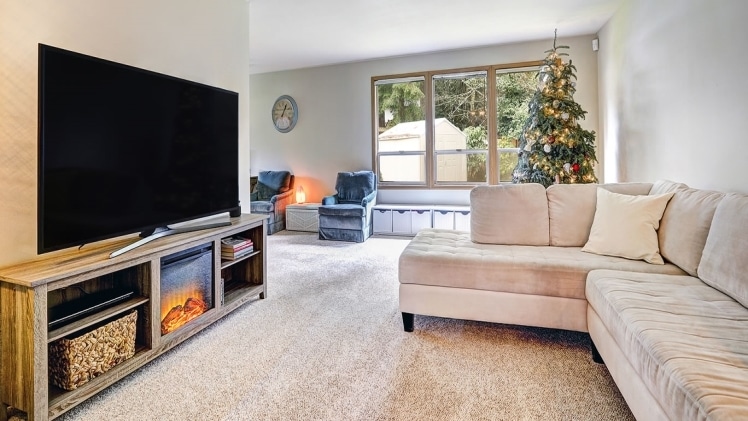Table of Contents
- Importance of Choosing the Right TV Stand
- Considerations Before Buying
- Types of TV Stands
- Size and Space Requirements
- Material and Build Quality
- Aesthetic and Style
Importance of Choosing the Right TV Stand
Choosing the right TV stand is crucial for both the safety of your television and the overall aesthetic of your living room. A poorly chosen stand can lead to instability and increase the risk of accidents. Additionally, the correct stand can significantly elevate the look and feel of your living space. With a high-quality stand like those available on Samsung Parts, you can ensure your television is both securely mounted and aesthetically pleasing.
A well-chosen TV stand serves multiple purposes. It holds the television and provides a focal point for the living room, anchoring the area’s design. A TV stand that is unsteady or poorly fitting might provide a safety risk, particularly in households where there are kids or pets. Furthermore, the right TV stand can enhance the overall viewing experience, offering ergonomic benefits by positioning the screen at an ideal height and angle.
Considerations Before Buying
Before purchasing a TV stand, consider several factors to ensure you make the best choice for your needs. First and foremost, the size of your TV is crucial. The TV stand should comfortably accommodate your television, both in terms of width and weight. In order to avoid overhang and potential tipping dangers, it’s generally a good idea to select a stand that is slightly wider than your TV.
Room dimensions and existing furniture are also significant considerations. The TV stand should fit well within your space without making the area feel cramped or overcrowded. Measure the intended space carefully and take into account any additional features or decorations that may affect the stand’s placement. Additionally, consider the functionality you require from the stand. Do you require additional space to store ornamental goods, gaming consoles, or media devices? Some TV stands come with built-in shelves, drawers, or cabinets, providing ample storage options to keep your living area organized.
Types of TV Stands
Corner TV Stands: Ideal for small spaces as they fit snugly into a corner without taking up much room. Corner TV stands to maximize space efficiency, making them perfect for apartments or compact living rooms.
Entertainment Centers: These are larger and come with lots of storage, providing an all-in-one solution. Entertainment centers often include multiple shelves, cabinets, and drawers, offering ample space for all your media equipment and accessories.
Swivel Stands: Offer flexibility in viewing angles, making it easy to adjust the TV’s position. Swivel stands are great for rooms with multiple seating areas or for those who enjoy watching TV from different spots.
Floating TV Stands: Mounted on the wall, saving floor space and providing a modern look. Floating TV stands create a sleek, contemporary aesthetic and can make a room feel more open and spacious.
Console TV Stands: Traditional stands that come in various styles and sizes, providing a balanced look and ample storage. Console stands are versatile and can fit seamlessly into both classic and modern decor themes.
Size and Space Requirements
Ensure that the stand you choose accommodates your TV’s size and weight. A good rule of thumb is to select a stand that is wider than your TV for stability. Calculate the available space in your living room to find a stand that fits comfortably without overcrowding the area. Keep in mind the future-proofing aspect; opting for a slightly larger stand can accommodate a potential TV upgrade.
It is crucial to make sure that the TV stand is situated that all of the room’s seating places have the best viewing angles. Avoid placing the stand in a location that causes glare from windows or direct sunlight. Take into account the stand’s height as well. For optimal viewing, sit such that the middle of the TV screen is at eye level.
Material and Build Quality
High-quality materials ensure durability and stability. Common materials include wood, glass, and metal, each offering different benefits. According to Live Science, the choice of material can greatly impact not just aesthetics but also the durability of the furniture. Wood offers a classic and sturdy feel, glass adds a sleek and modern touch, while metal provides a contemporary industrial look.
When choosing a material, consider not only its appearance but also its maintenance requirements. Wooden TV stands require regular dusting and occasional polishing to maintain their finish, while glass stands may need frequent cleaning to remove fingerprints and smudges. Metal stands are typically low-maintenance but should be checked periodically for any signs of rust or wear.
Aesthetic and Style
Match the TV stand with your existing decor to create a cohesive look. Whether you prefer a modern, rustic, or traditional style, there are various designs to suit your taste. For some inspiration, check out Architectural Digest for a gallery of stylish TV stands that cater to different design sensibilities. This ensures that the TV stand not only holds your television but also complements your room’s overall aesthetic.
The style of the TV stand can significantly influence the ambiance of your living room. A rustic wooden stand can add warmth and character, while a minimalist metal stand can create a sleek, modern vibe. Consider the colors and finishes, as well. A stand that matches or contrasts effectively with your existing furniture can create a harmonious and visually appealing environment.


